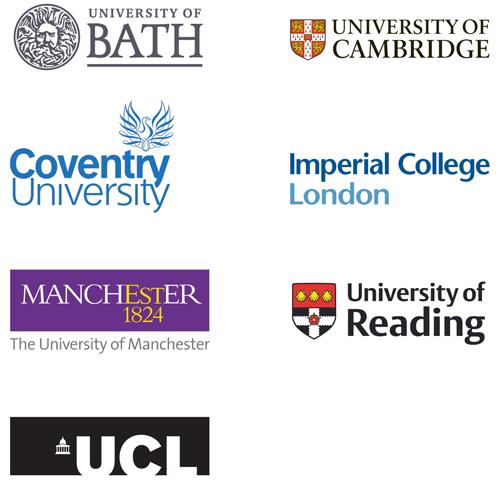Future materials & processes – Ecobuild 2017
7–9 March 2017
Excel, London
Our stands and seminar series at Ecobuild 2017 explored the latest discoveries in future building materials and processes. Catch up on the presentations to ensure you have the edge on your competitors before this research comes to market. The themes are low carbon, inspired by nature and processes & manufacturing.
The Future materials & processes stand includes research from the University of Cambridge, University College London, Imperial College London, Coventry University, University of Reading, University of Manchester, and University of Bath.
Low carbon
Most of the world’s man-made carbon emissions are released by burning fossil fuels to create electricity, heat or motion. We can help to reduce these emissions through innovations in the way we design and construct buildings
The products featured will help to build a low carbon future through reducing weight and energy required for production. There are ensuing savings not only within the building footprint but also through transporting lighter materials to site. Some of the products also allow for curved as well as linear-based buildings, so increasing the creative pallet for carbon-neutral architecture.
- Self-cleaning, colour-changing (thermochromic) windows that combine nanotechnology with materials innovation to dim during hot weather reducing glare as well as heat transmission
- Luminescent solar concentrators with the potential to lead an aesthetic revolution in the integration of solar energy into building design
- Glass fibre reinforced concrete for design freedom of durable facades
- Lightweight composite sandwich panel facades enabling complex geometries
- Thin toughened glass suitable for building facades that can be curved at room temperature
- Paving which contains no Portland cement yet retains material durability and other physical characteristics
Take a look at the presentations…
Inspired by nature
The move towards a more multidisciplinary approach to environmental design is an opportunity for new materials, technology and living forms to redefine not only building design, but the entire built environment.
This theme showcases what is possible when we bring together natural and engineering solutions. for the built environment, including:
- Photosynthesising carbon neutral, perhaps even net negative building facades
- Innovative eco-building materials inspired by nature that address poor air quality
- Building surfaces that grow their own shade
- 3D bio-printing with hydrogels to produce bio-receptive architectural scaffolds
Take a look at the presentations…
Processes & manufacturing
Reducing waste, implementing efficient practices and improving operations are established parts of lean manufacturing ideology. We take this one step further and focus on sustainable practices of the future that could become the norm. Find out more about:
- Drones for inspection and repair in smart cities
- Testing of new materials at The Hive to understand weather robustness materials and structures, the carbon emissions and environmental impact
- Emerging innovations in software that enables building and location bespoke assessment of performance enhancing adaptive facade technologies, bespoke product design to environmental context as well as optimal operational performance assessment
- Feathers
- Using recycled waste in non-load bearing structures



